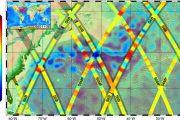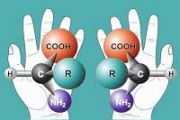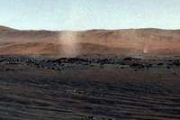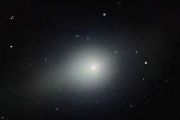
Copernical Team
Kitesurfing the white wilderness for polar science
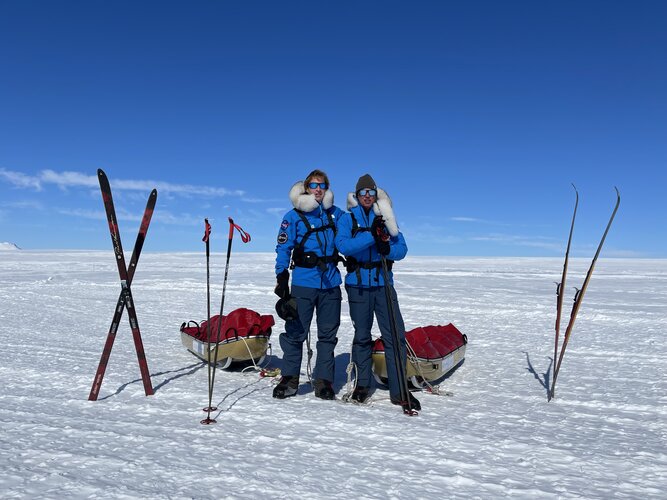
In an astonishing feat of endurance, explorers Justin Packshaw and Jamie Facer Childs are a quarter of the way through a 3600-km kitesurf trek that takes them across the desolate heart of Antarctica. They are not pushing their physical and mental limits to the brink, facing howling gales and temperatures of –55°C just for the sake of adventure. They are gathering information to help scientists better understand how the body responds to extremes and taking unique measurements of their ice environment that will help complement ESA’s CryoSat mission to better understand how this giant ice
Did black holes form immediately after the Big Bang?
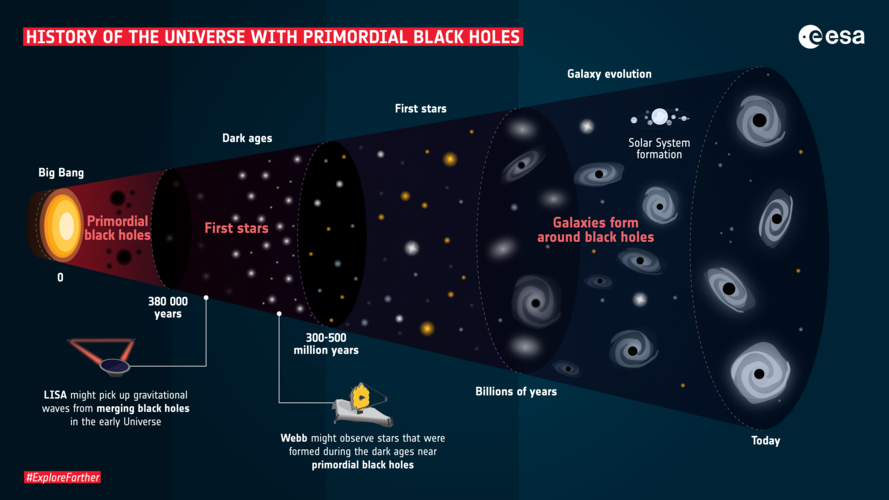
How did supermassive black holes form? What is dark matter? In an alternative model for how the Universe came to be, as compared to the ‘textbook’ history of the Universe, a team of astronomers propose that both of these cosmic mysteries could be explained by so-called ‘primordial black holes’.
Airbus and OneWeb expand their partnership to connect European defence and security forces
 Airbus and OneWeb have signed a distribution partner agreement to provide low Earth orbit (LEO) satellite communication services for military and governmental use. As the leading provider of military satellite communication services in Europe, Airbus will offer new communication services utilising the OneWeb constellation to select European and UK armed forces, and civil protection and security
Airbus and OneWeb have signed a distribution partner agreement to provide low Earth orbit (LEO) satellite communication services for military and governmental use. As the leading provider of military satellite communication services in Europe, Airbus will offer new communication services utilising the OneWeb constellation to select European and UK armed forces, and civil protection and security India May Become 1st in Line to Buy Russian Air Defense System S-500
 India may become the first in line to but Russian air defense system S-500, if it expresses such a desire, after the Russian Armed Forces receive them in required quantity, Russian Deputy Prime Minister Yury Borisov said.
"India will probably be the first on the list if it expresses a desire to buy these modern means," Borisov said in an interview with the RBC broadcaster.
He specifi
India may become the first in line to but Russian air defense system S-500, if it expresses such a desire, after the Russian Armed Forces receive them in required quantity, Russian Deputy Prime Minister Yury Borisov said.
"India will probably be the first on the list if it expresses a desire to buy these modern means," Borisov said in an interview with the RBC broadcaster.
He specifi Innovative silicon nanochip can reprogram biological tissue in living body
Tehran getting ready for space satellite launch
 In early December, Iranian media outlets reported that Tehran's civilian space programme stipulates launching four satellites, including one that was described as being "under the final phase of preparation".
Tehran appears to be getting ready for a space satellite launch amid the Vienna talks on the Iran nuclear deal, according to several satellite images showing alleged activity at the I
In early December, Iranian media outlets reported that Tehran's civilian space programme stipulates launching four satellites, including one that was described as being "under the final phase of preparation".
Tehran appears to be getting ready for a space satellite launch amid the Vienna talks on the Iran nuclear deal, according to several satellite images showing alleged activity at the I NASA to launch 4 Earth Science Missions in 2022
 NASA will launch four Earth science missions in 2022 to provide scientists with more information about fundamental climate systems and processes including extreme storms, surface water and oceans, and atmospheric dust. Scientists will discuss the upcoming missions at the American Geophysical Union's (AGU) 2021 Fall Meeting, hosted in New Orleans between Dec. 13 and 17.
NASA has a unique vi
NASA will launch four Earth science missions in 2022 to provide scientists with more information about fundamental climate systems and processes including extreme storms, surface water and oceans, and atmospheric dust. Scientists will discuss the upcoming missions at the American Geophysical Union's (AGU) 2021 Fall Meeting, hosted in New Orleans between Dec. 13 and 17.
NASA has a unique vi BlackSky achieves highest revisit, dawn-to-dusk satellite coverage
 BlackSky's high-resolution small satellite constellation has the highest revisit rate in the world, with a peak of 15 hourly visits per day over certain locations. The real-time geospatial intelligence company achieved a 12 small satellite constellation, doubling its imaging capacity, following Wednesday's successful Rocket Lab mission.
In less than 30 days the company launched six satelli
BlackSky's high-resolution small satellite constellation has the highest revisit rate in the world, with a peak of 15 hourly visits per day over certain locations. The real-time geospatial intelligence company achieved a 12 small satellite constellation, doubling its imaging capacity, following Wednesday's successful Rocket Lab mission.
In less than 30 days the company launched six satelli MDA announces Chorus as new commercial EO mission
 MDA Ltd. has announced at the World Satellite Business Week event that its next generation commercial Earth observation (EO) mission will be named CHORUS. The company also announced that CHORUS will initially include C-band and X-band Synthetic Aperture Radar (SAR) satellites.
A collaborative multi-sensor constellation, CHORUS will bring together multiple diverse and unique perspectives in
MDA Ltd. has announced at the World Satellite Business Week event that its next generation commercial Earth observation (EO) mission will be named CHORUS. The company also announced that CHORUS will initially include C-band and X-band Synthetic Aperture Radar (SAR) satellites.
A collaborative multi-sensor constellation, CHORUS will bring together multiple diverse and unique perspectives in Kitesurfing the white wilderness for science

In an astonishing feat of endurance, explorers Justin Packshaw and Jamie Facer Childs are a quarter of the way through a 3600-km kitesurf trek that takes them across the desolate heart of Antarctica. They are not pushing their physical and mental limits to the brink, facing howling gales and temperatures of –55°C just for the sake of adventure. They are gathering information to help scientists better understand how the body responds to extremes and taking unique measurements of their ice environment that will help complement ESA’s CryoSat mission to better understand how this giant ice























